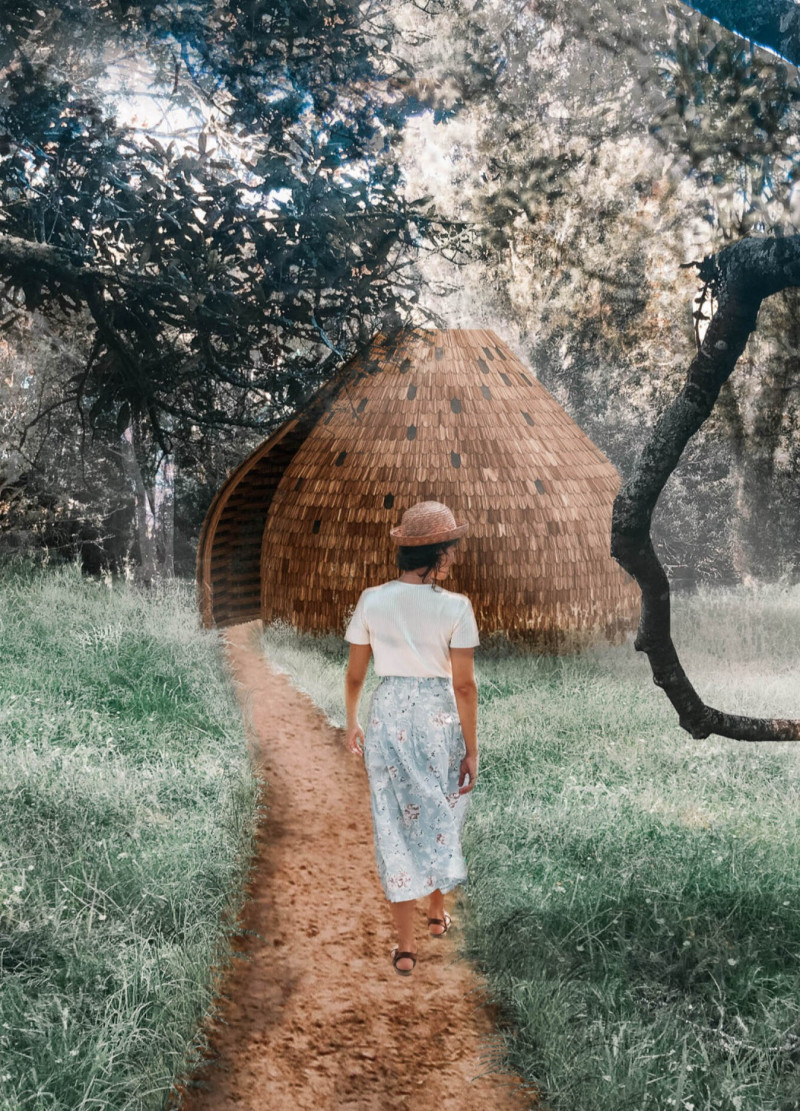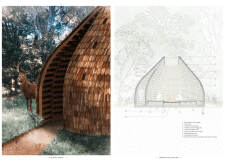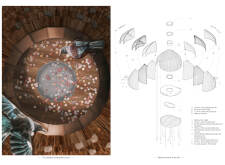5 key facts about this project
The meditation cabin is located in a quiet natural setting designed to encourage reflection and mindfulness. Inspired by the Japanese enso symbol, it emphasizes the connection between users and their environment. The cabin features a unique form reminiscent of traditional wooden huts, highlighted by an oculus that brings in natural light. The overall concept seeks to create a space that promotes contemplation while harmonizing with the surrounding landscape.
Exterior Design
The design of the cabin presents a polygonal shape that blends modern ideas with traditional styles. Wooden scales cover the exterior, complemented by polished glass, creating a balance between openness and privacy. The oculus is intentionally positioned to allow light to wash over the interior, symbolizing a connection to the skies. The entrance, framed by a narrow crack, invites visitors into a peaceful space that encourages quiet thought.
Interior Layout
Inside, the layout is carefully planned to guide individuals as they transition from the outside world to a space of calm. A polygonal platform is raised above the floor level, encouraging users to remove their shoes. This act symbolizes the release of outside distractions. The platform also includes niches for storage, which helps maintain a clean and simple environment suitable for meditation. The open spaces within the cabin allow for movement and thought without obstruction.
Functional Features
At the heart of the cabin is a fireplace that adapts according to the seasons. During colder months, it provides warmth and creates a cozy atmosphere. In rainy weather, the fireplace cleverly collects water through the oculus, enhancing its usefulness. When not in use for fire, the fireplace can become a flat surface for drying flowers, further linking the cabin to its natural surroundings.
Structural Considerations
Building methods for the cabin include small wooden elements supported by metal piles. This approach ensures stability and makes assembly easier in remote areas. The arrangement of the structural elements allows for views toward the entrance and culminates in the oculus, improving the experience of entering the space. This design detail shows careful consideration of both strength and the ability to connect with the landscape.
The integration of light, space, and function creates a calm environment that invites visitors to engage in deep meditation.






















































